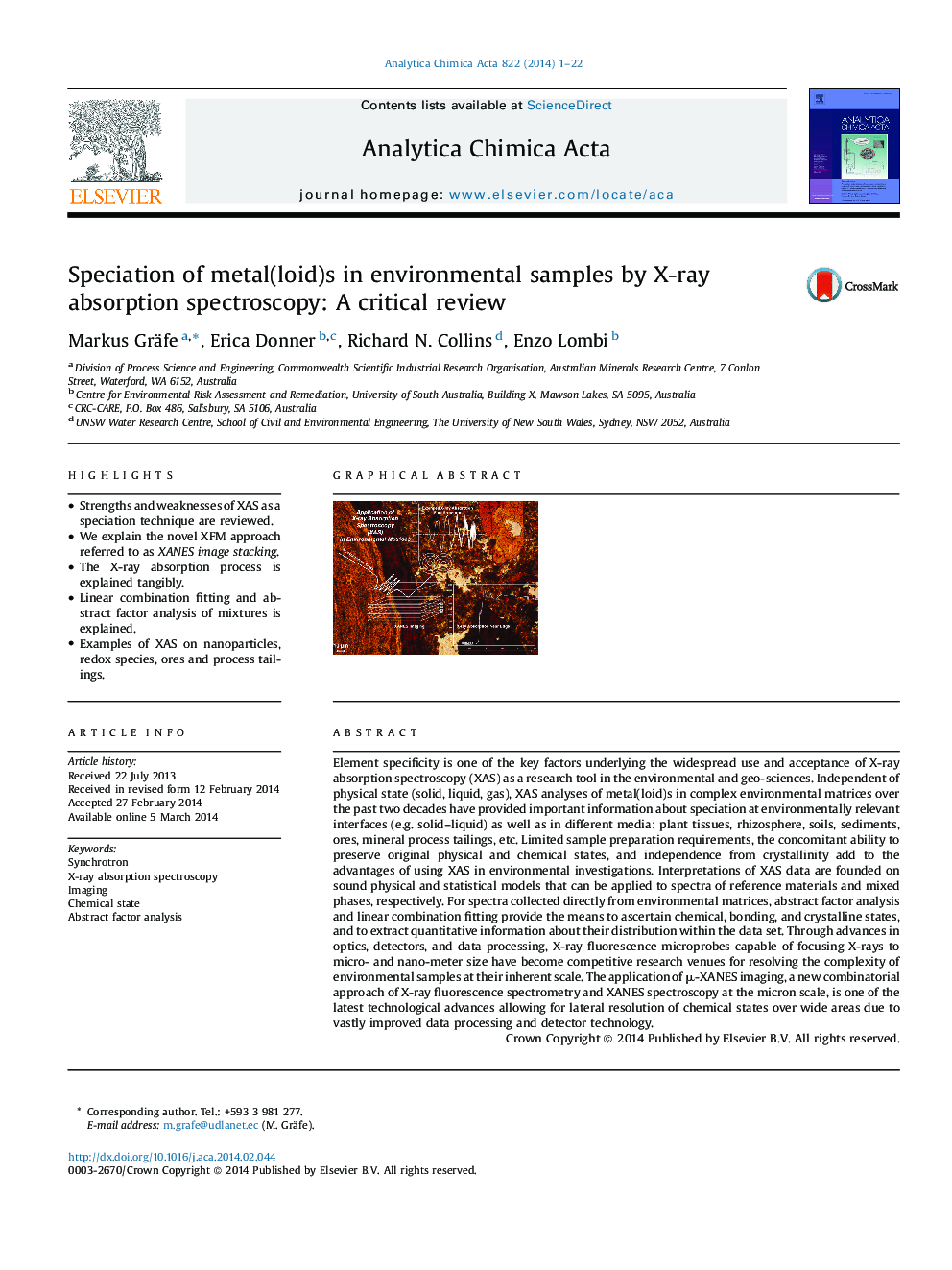| کد مقاله | کد نشریه | سال انتشار | مقاله انگلیسی | نسخه تمام متن |
|---|---|---|---|---|
| 1164851 | 1491010 | 2014 | 22 صفحه PDF | دانلود رایگان |
• Strengths and weaknesses of XAS as a speciation technique are reviewed.
• We explain the novel XFM approach referred to as XANES image stacking.
• The X-ray absorption process is explained tangibly.
• Linear combination fitting and abstract factor analysis of mixtures is explained.
• Examples of XAS on nanoparticles, redox species, ores and process tailings.
Element specificity is one of the key factors underlying the widespread use and acceptance of X-ray absorption spectroscopy (XAS) as a research tool in the environmental and geo-sciences. Independent of physical state (solid, liquid, gas), XAS analyses of metal(loid)s in complex environmental matrices over the past two decades have provided important information about speciation at environmentally relevant interfaces (e.g. solid–liquid) as well as in different media: plant tissues, rhizosphere, soils, sediments, ores, mineral process tailings, etc. Limited sample preparation requirements, the concomitant ability to preserve original physical and chemical states, and independence from crystallinity add to the advantages of using XAS in environmental investigations. Interpretations of XAS data are founded on sound physical and statistical models that can be applied to spectra of reference materials and mixed phases, respectively. For spectra collected directly from environmental matrices, abstract factor analysis and linear combination fitting provide the means to ascertain chemical, bonding, and crystalline states, and to extract quantitative information about their distribution within the data set. Through advances in optics, detectors, and data processing, X-ray fluorescence microprobes capable of focusing X-rays to micro- and nano-meter size have become competitive research venues for resolving the complexity of environmental samples at their inherent scale. The application of μ-XANES imaging, a new combinatorial approach of X-ray fluorescence spectrometry and XANES spectroscopy at the micron scale, is one of the latest technological advances allowing for lateral resolution of chemical states over wide areas due to vastly improved data processing and detector technology.
Figure optionsDownload as PowerPoint slide
Journal: Analytica Chimica Acta - Volume 822, 25 April 2014, Pages 1–22
